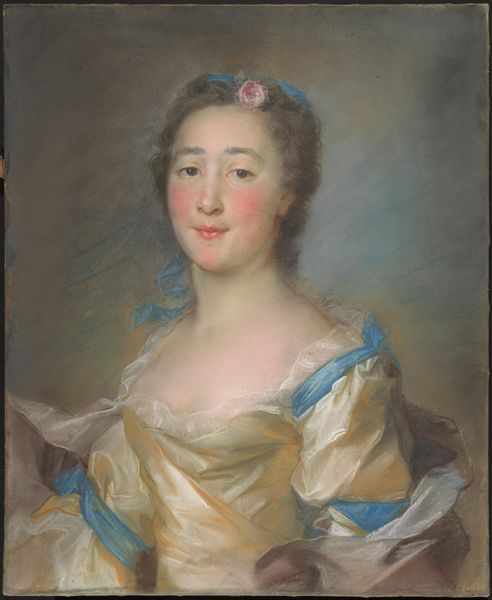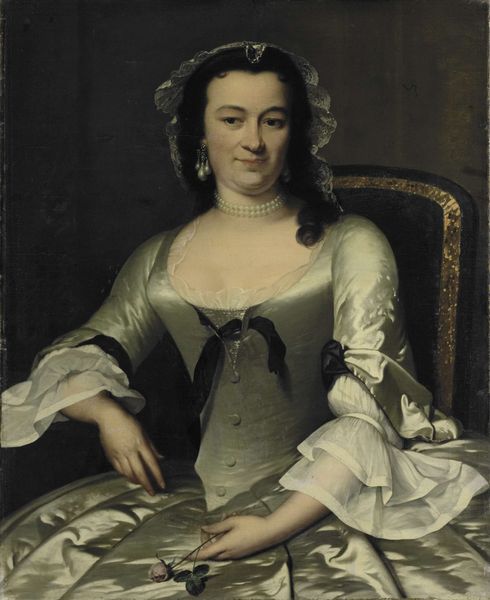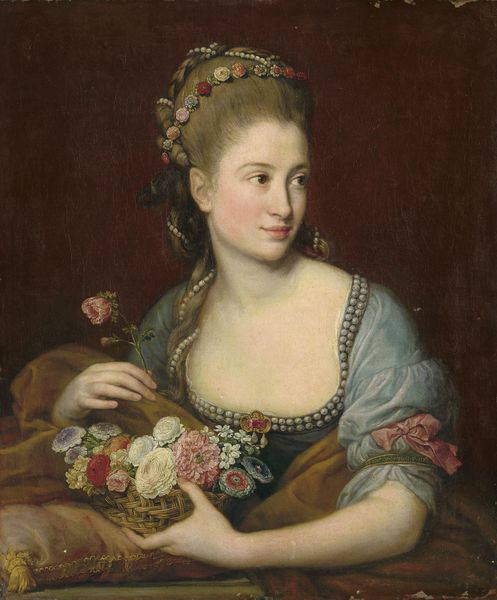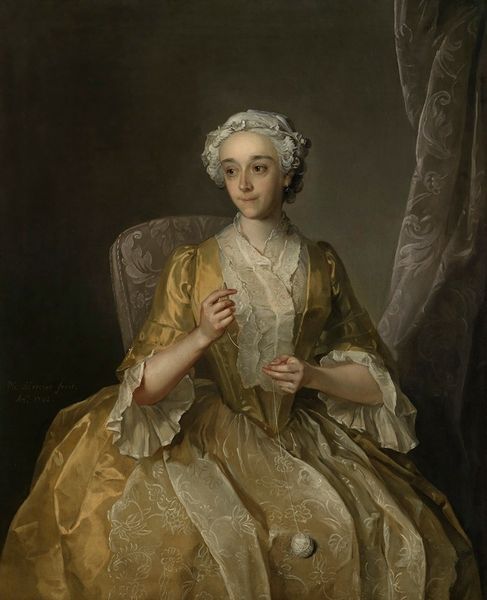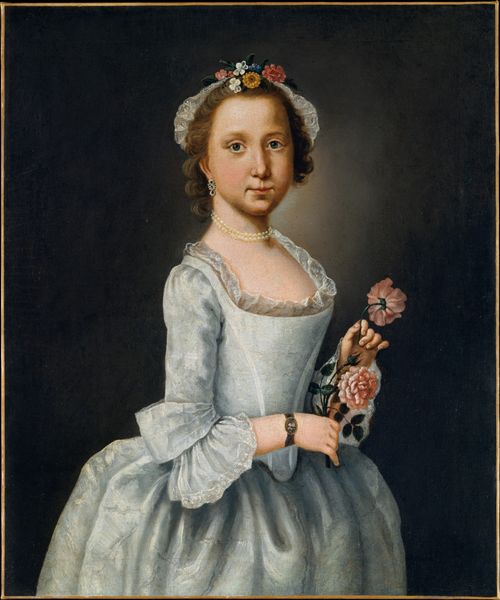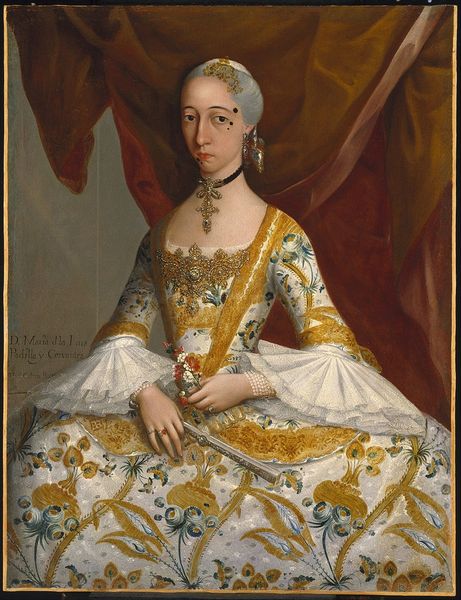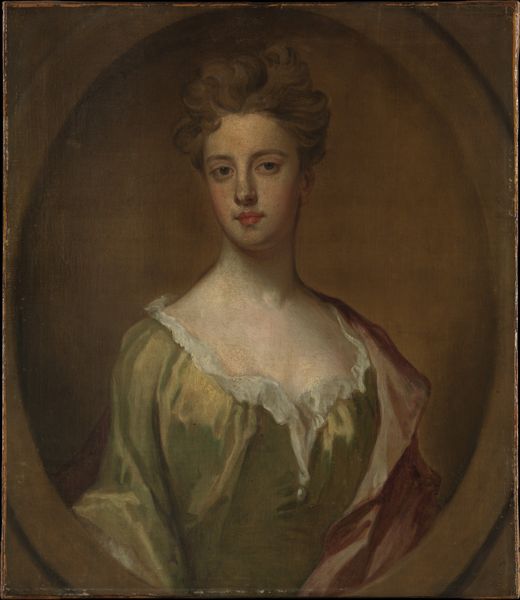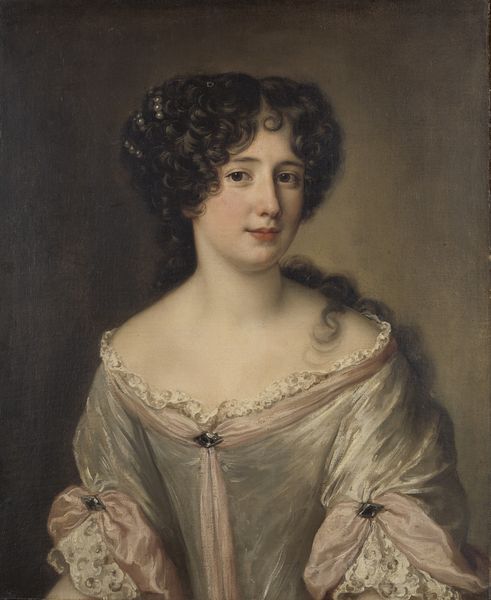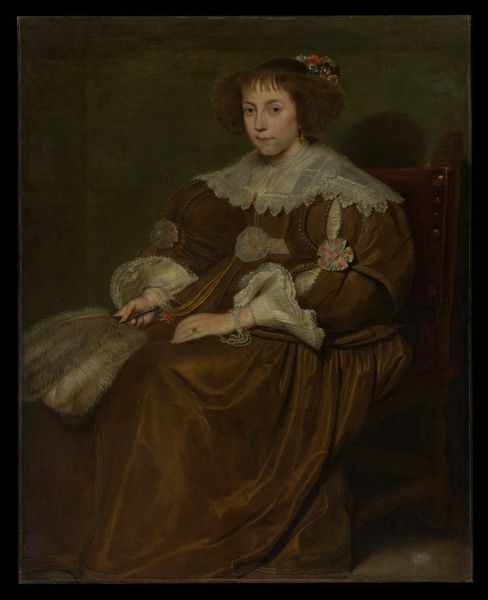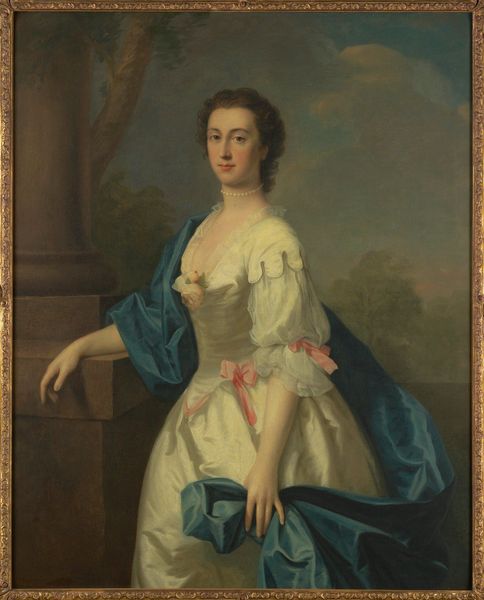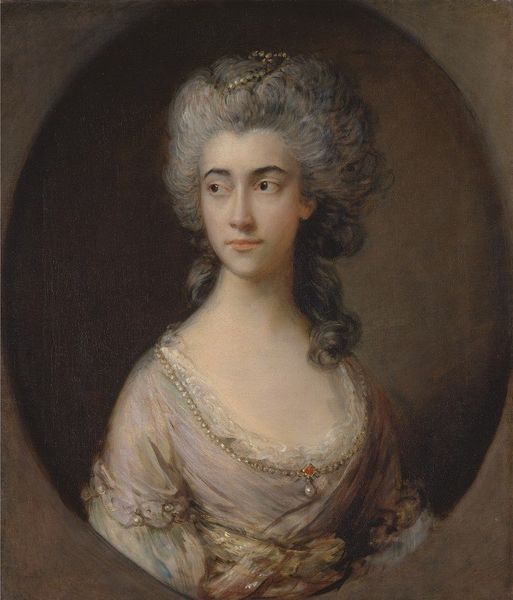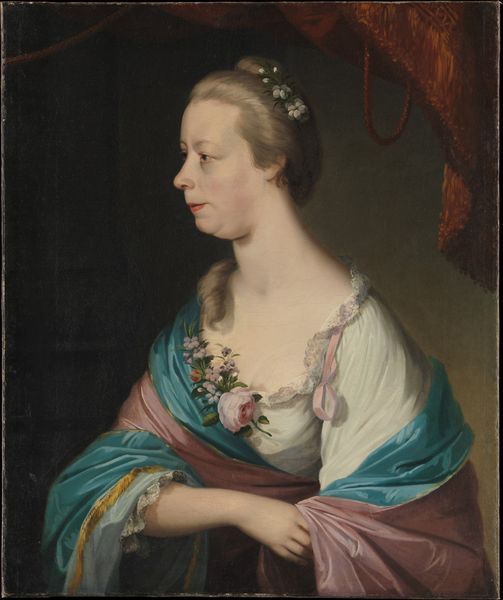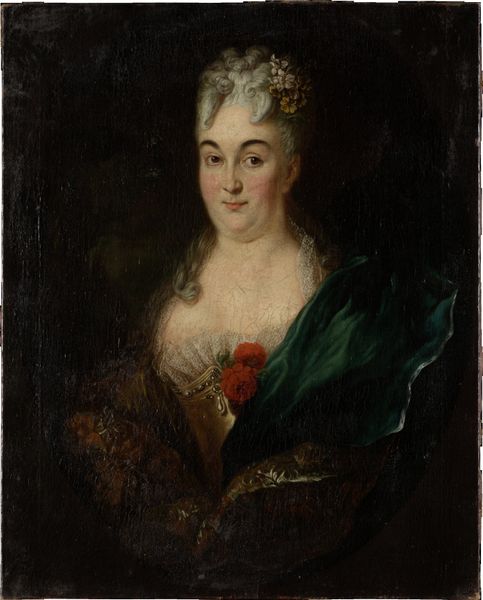
painting, gouache
#
portrait
#
gouache
#
neoclacissism
#
painting
#
gouache
#
history-painting
#
academic-art
#
watercolor
#
realism
Copyright: Public domain
Curator: Look, the flowers! She's wearing them, but they are also arranged as a bouquet next to her writing desk. The delicate watercolor application only underscores their temporal fragility. Editor: Yes, it feels so staged. This is "Doña María de los Dolores Gutiérrez del Mazo y Pérez," a portrait from 1796 by José Campeche, executed in gouache. The artist was a leading portraitist in Puerto Rico at the time. Curator: It's clearly Neoclassical with those aristocratic sensibilities—the controlled composition, the smooth surfaces...Yet I sense a distinct Caribbean interpretation through his detailed realism. Take that crown of flowers, for example. In European portraiture, it could indicate a mythological affiliation. Here, it also whispers to the islands. Editor: Precisely! While she exudes privilege, that flower crown could simultaneously be read as an intentional claim to nativeness during a historical period marked by complex hierarchies and social upheaval. She is literally crowning herself with the natural world. It subverts power through vulnerability. Curator: It speaks volumes doesn't it? See that vase and how Campeche delicately captured its reflective surface? Glass suggests transparency, truth perhaps, or maybe simply the shifting and elusive nature of appearances, mirroring our perceptions. Even that small birdcage detail. A symbol for wealth. A subtle, yet weighty reminder of her place in society, constrained but elegant. Editor: Agreed. Let's not forget what's happening in the background politically; revolutionary discourse, new declarations of rights circulating amongst colonies, creating social fissures. Campeche doesn't explicitly reference it, but to ignore that context in interpreting how she represents herself is to flatten any potential tension in this portrait. Curator: What is fascinating is that Campeche uses such specific details to address universal themes. Class, gender, perception, beauty, all condensed into this intimate portrait of a woman with such poised reserve. Editor: Exactly! This portrait, like many others, urges us to consider the silent negotiations of identity at play during moments of historical transition. María de los Dolores stakes her place in a quickly changing world and it's powerful.
Comments
No comments
Be the first to comment and join the conversation on the ultimate creative platform.

